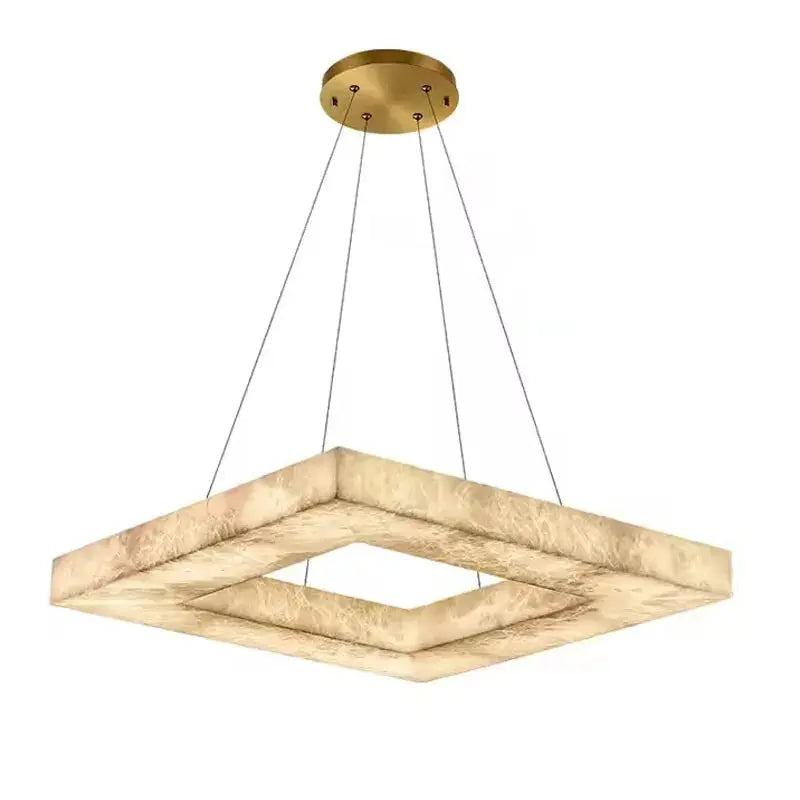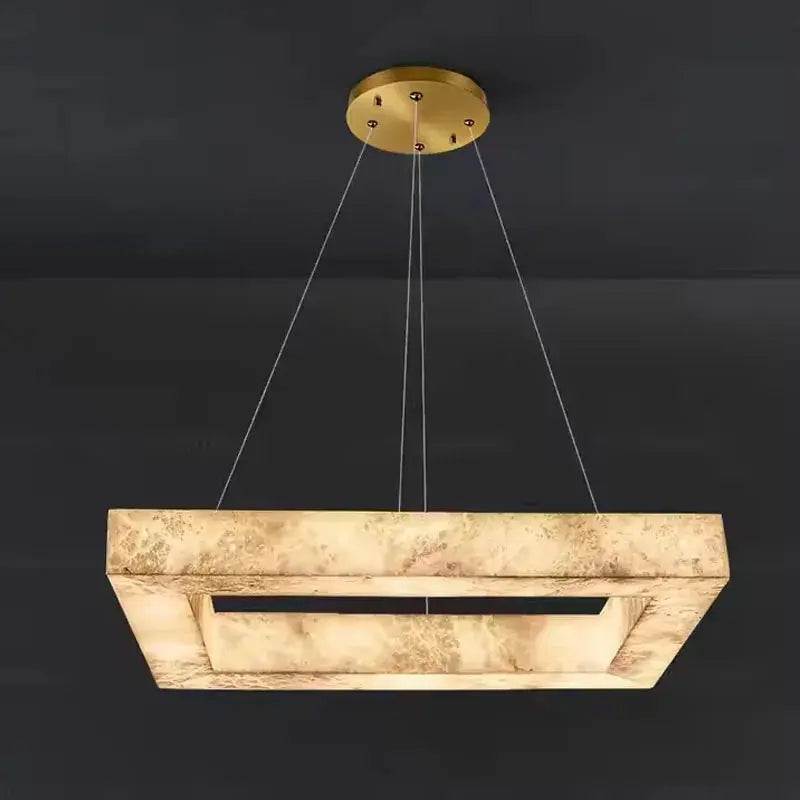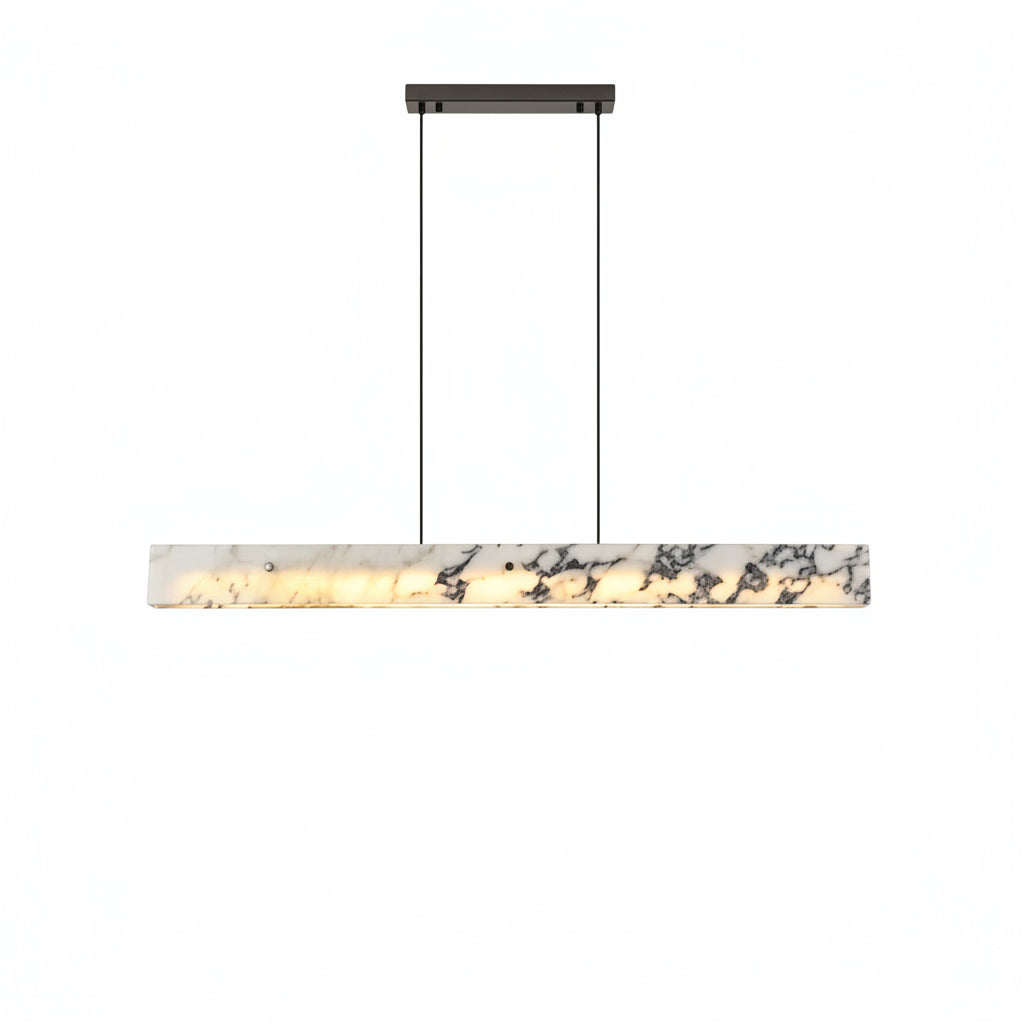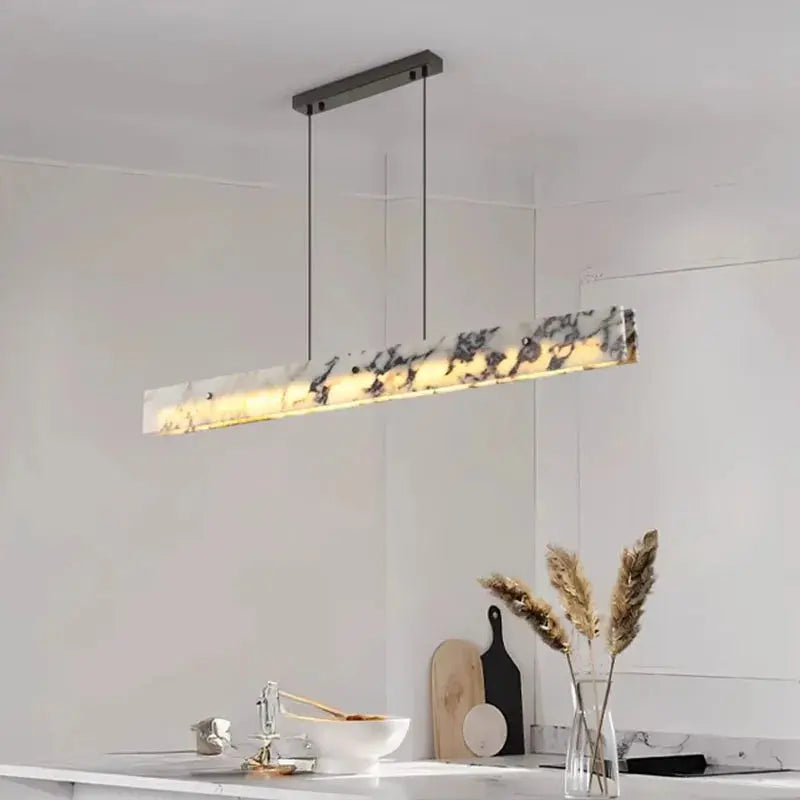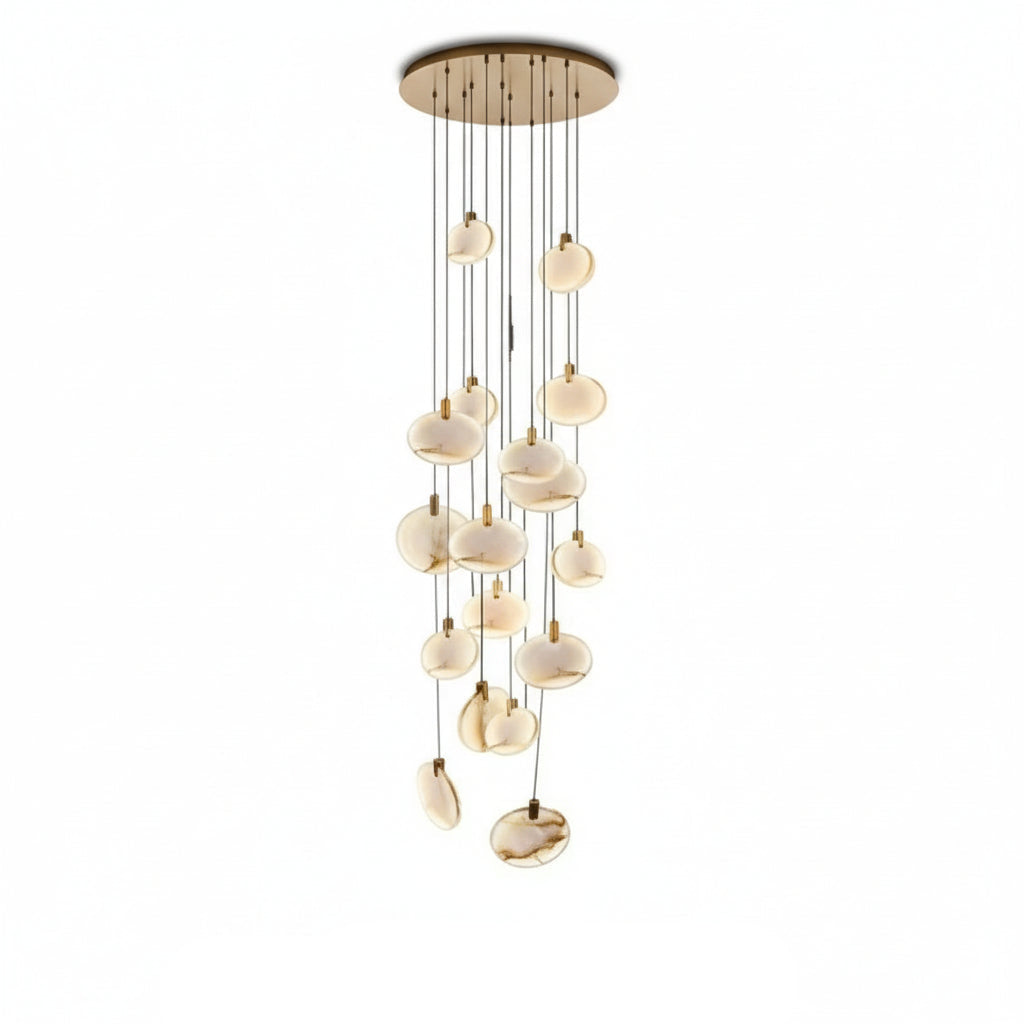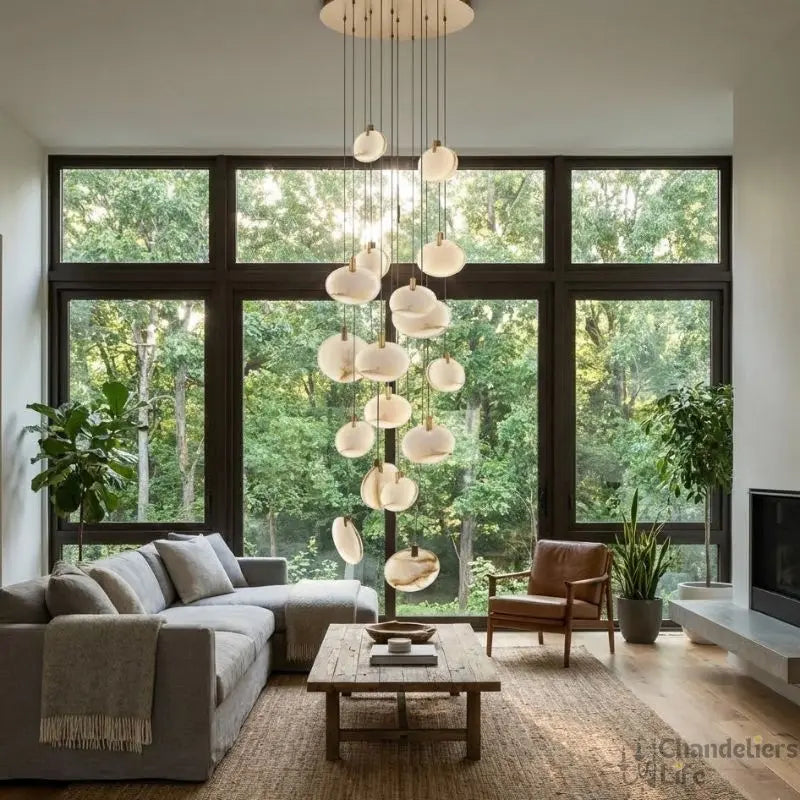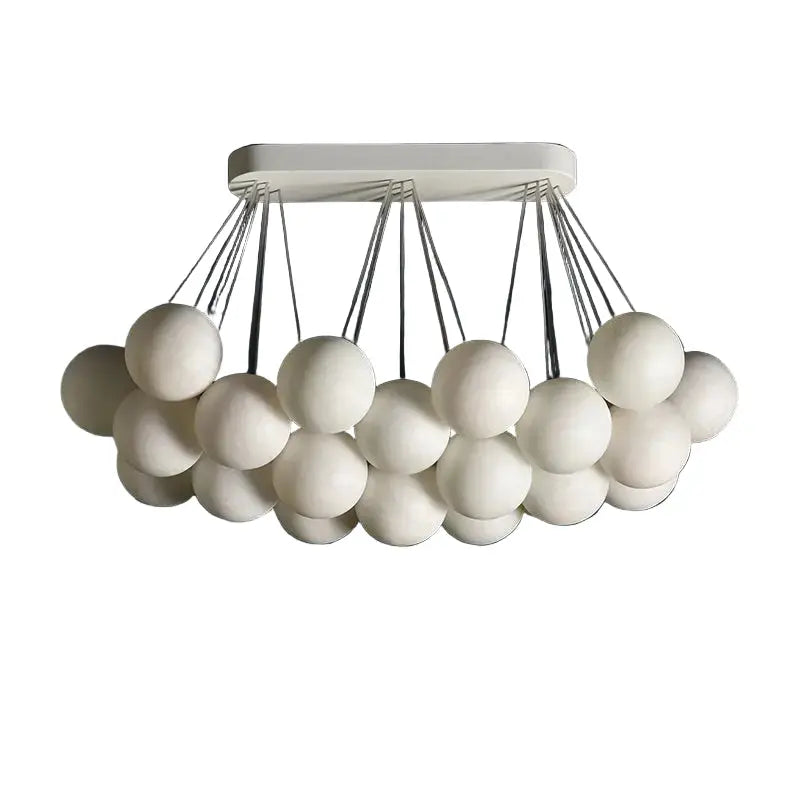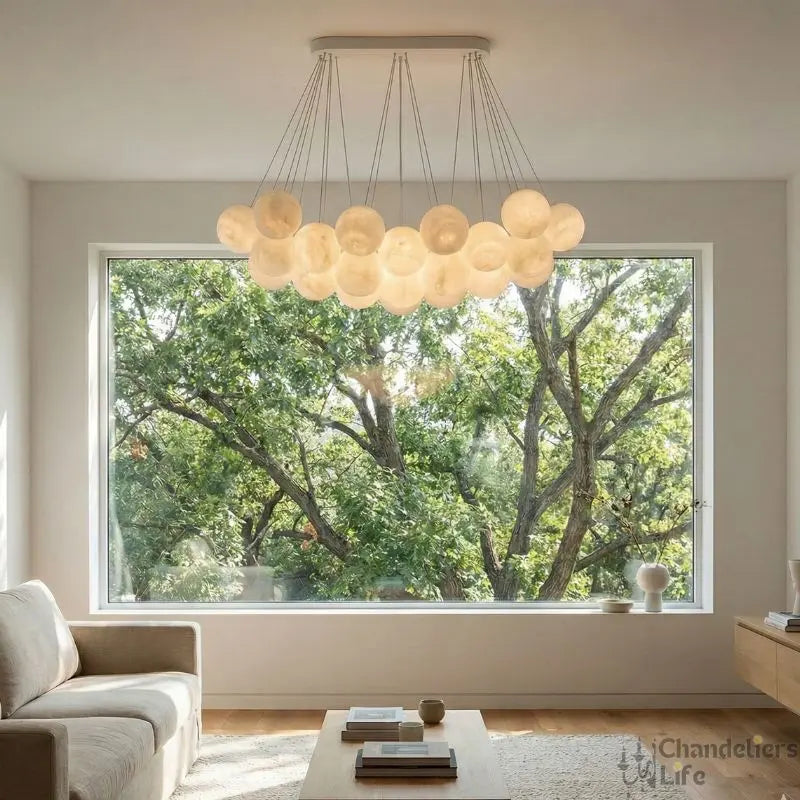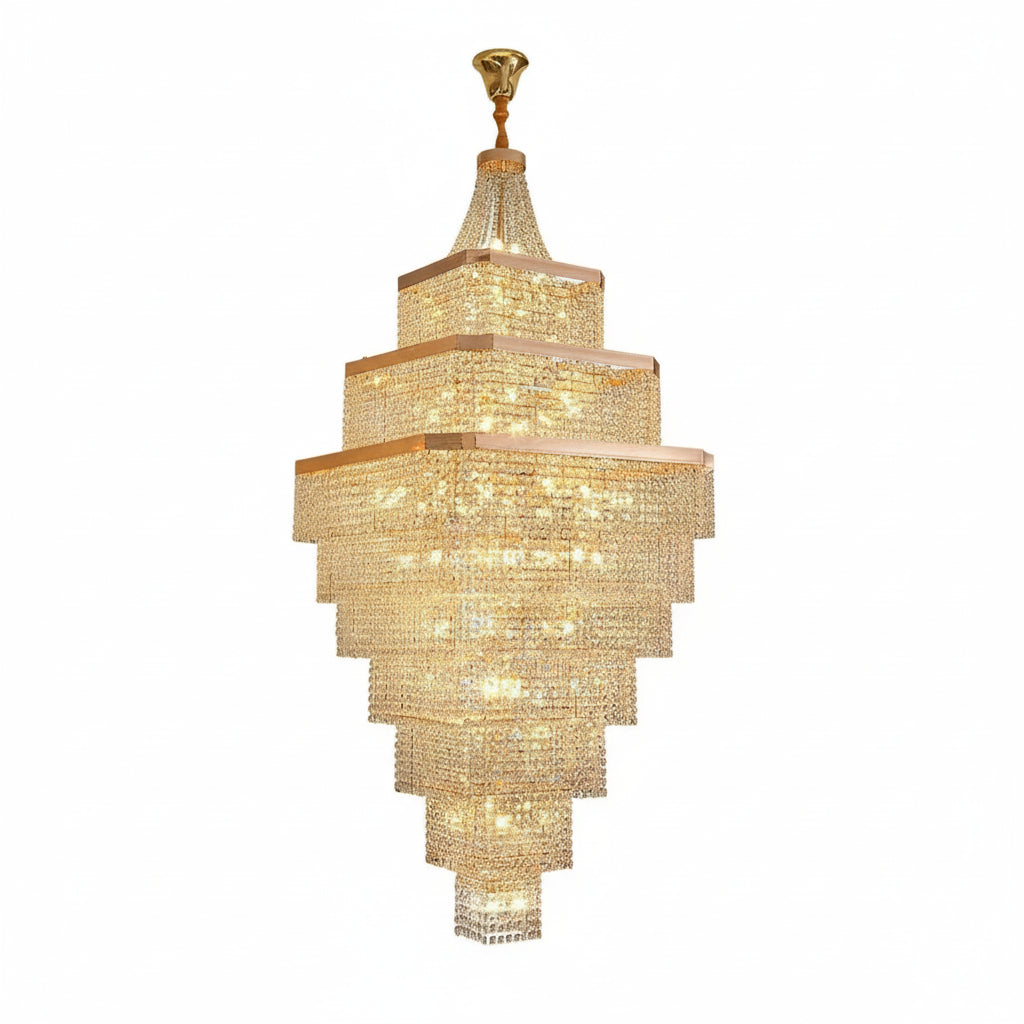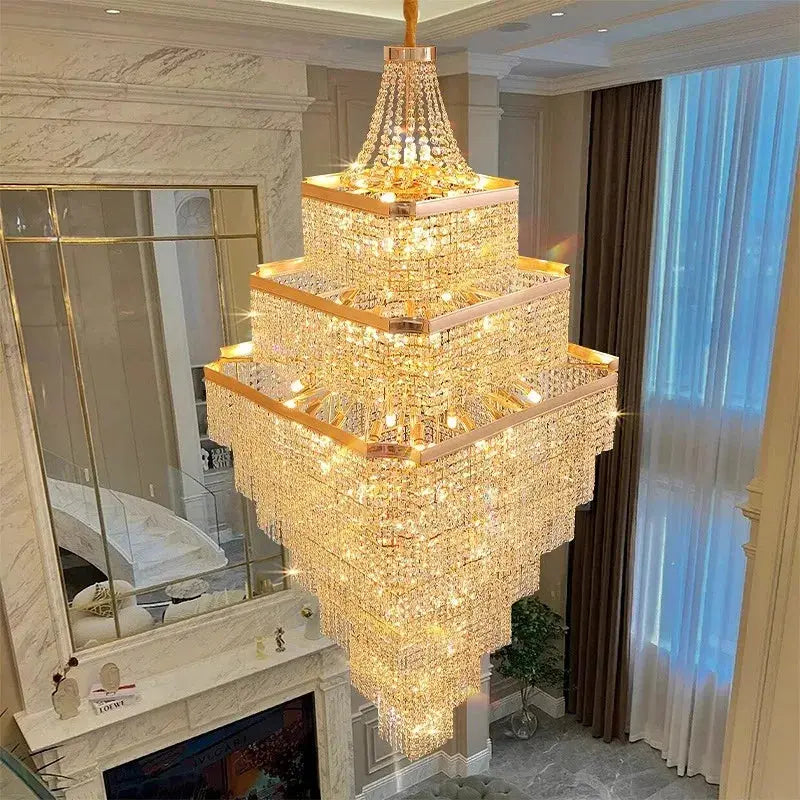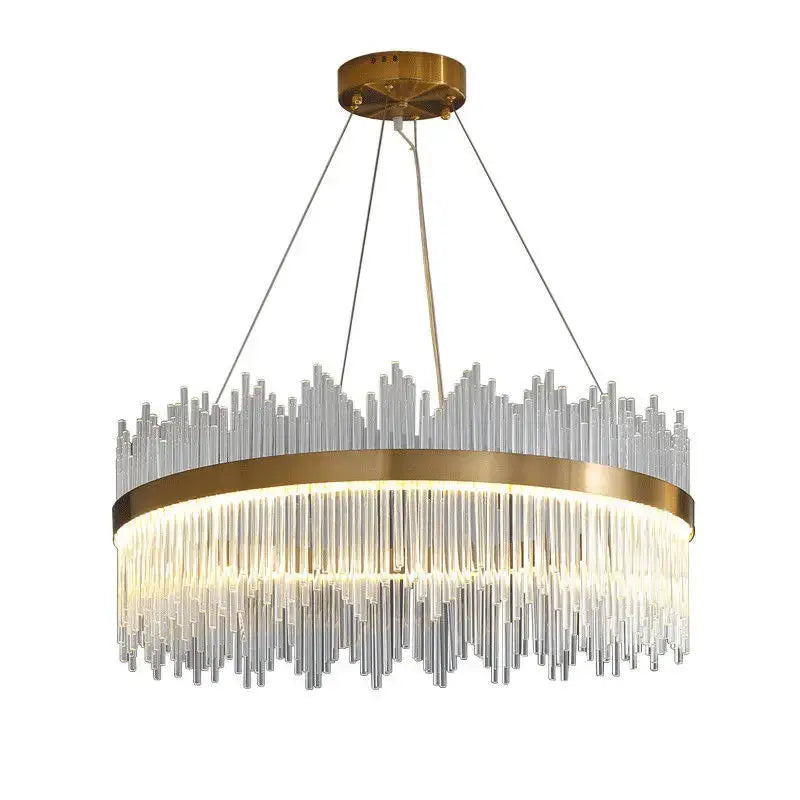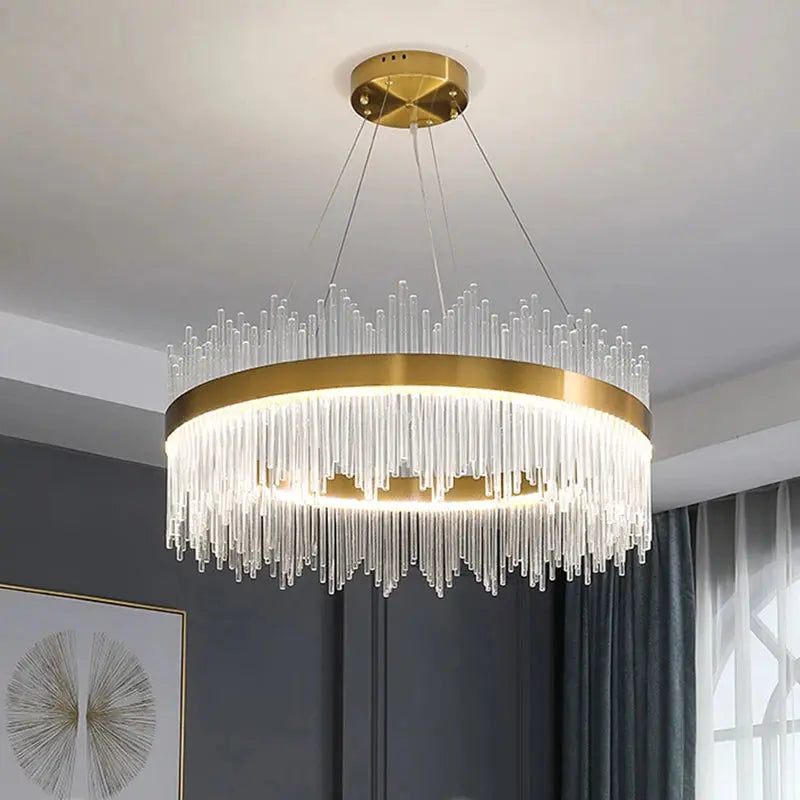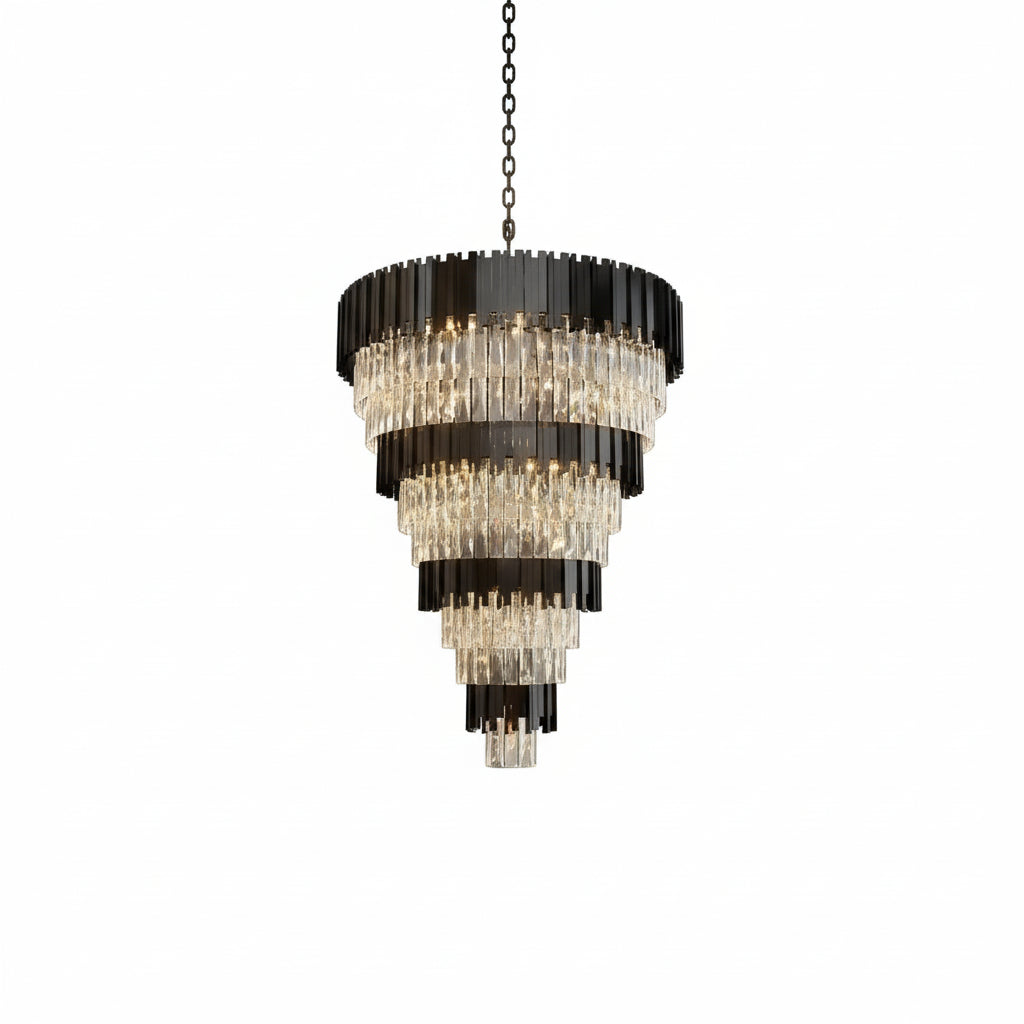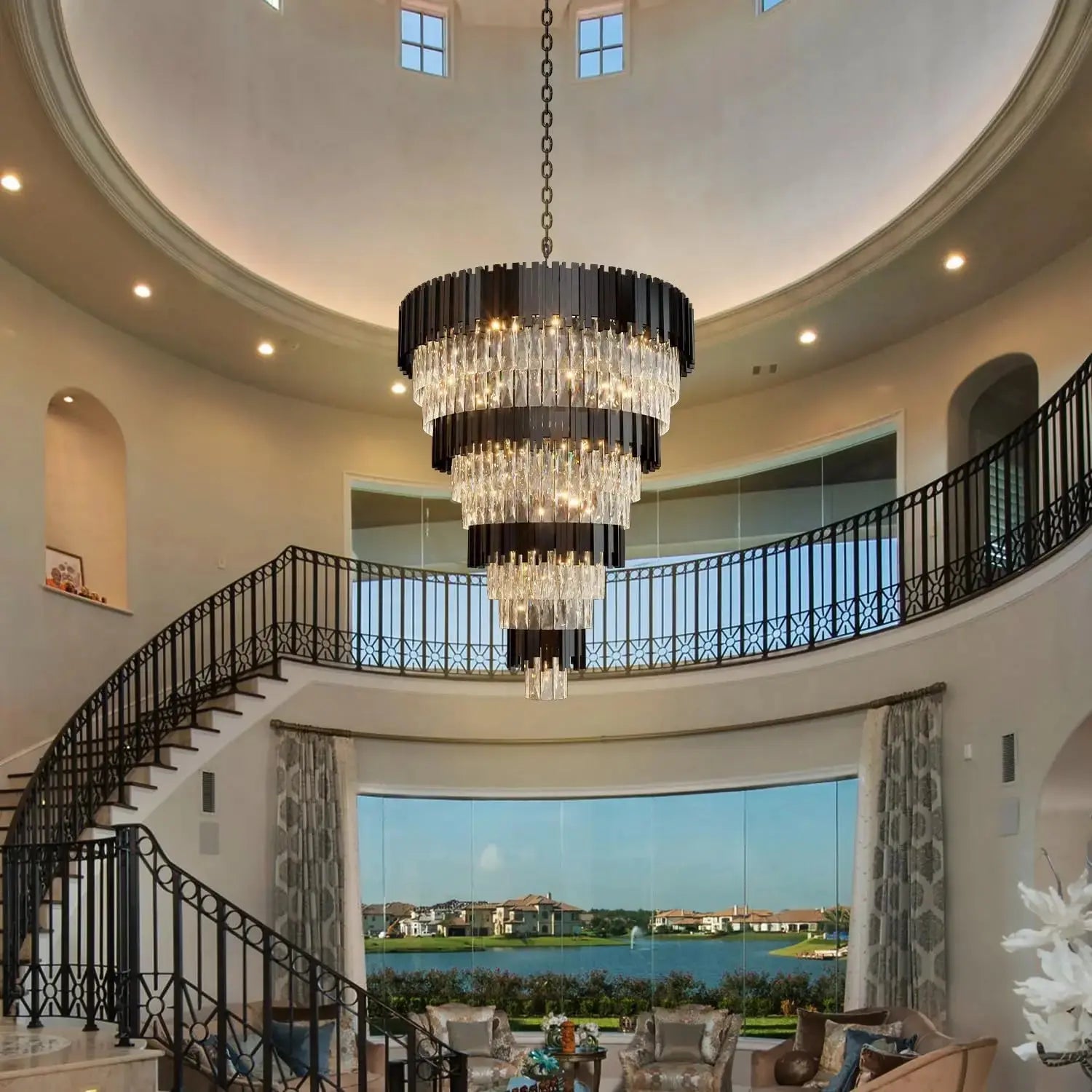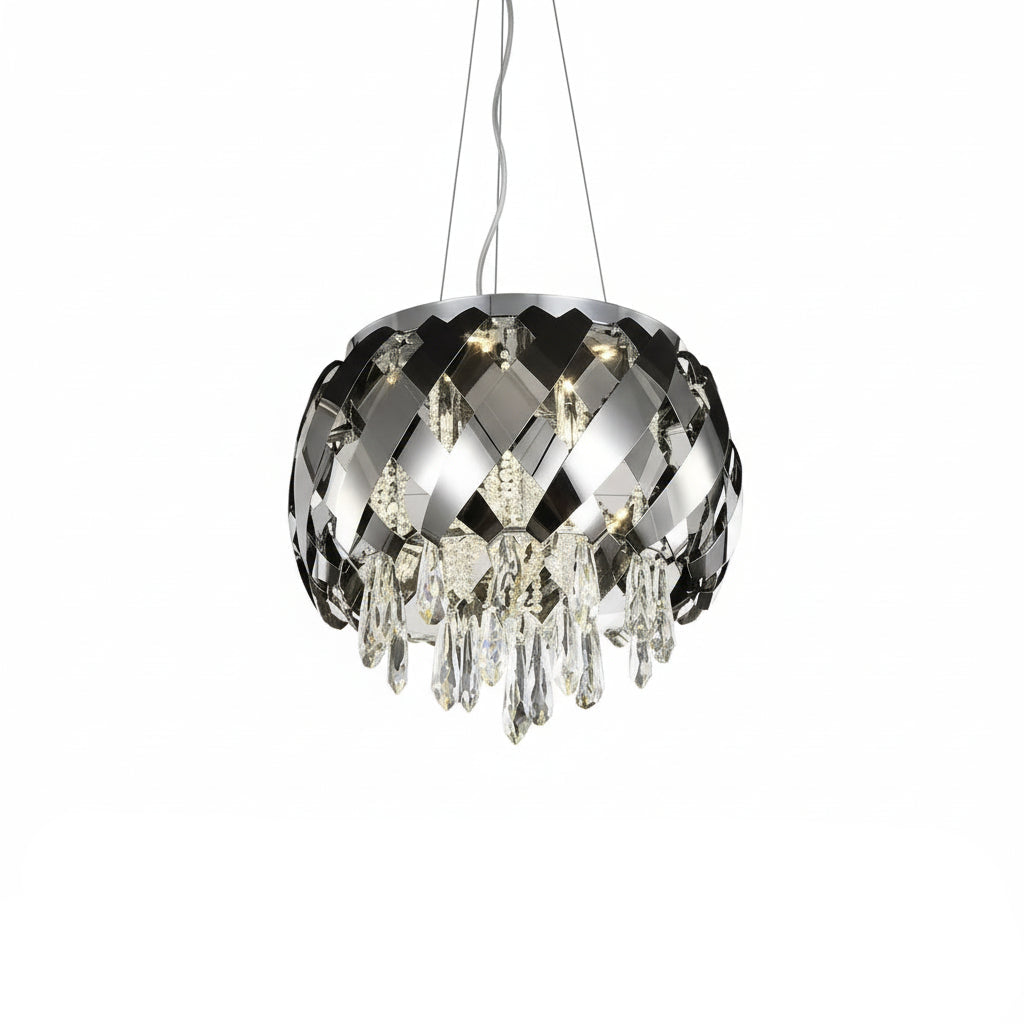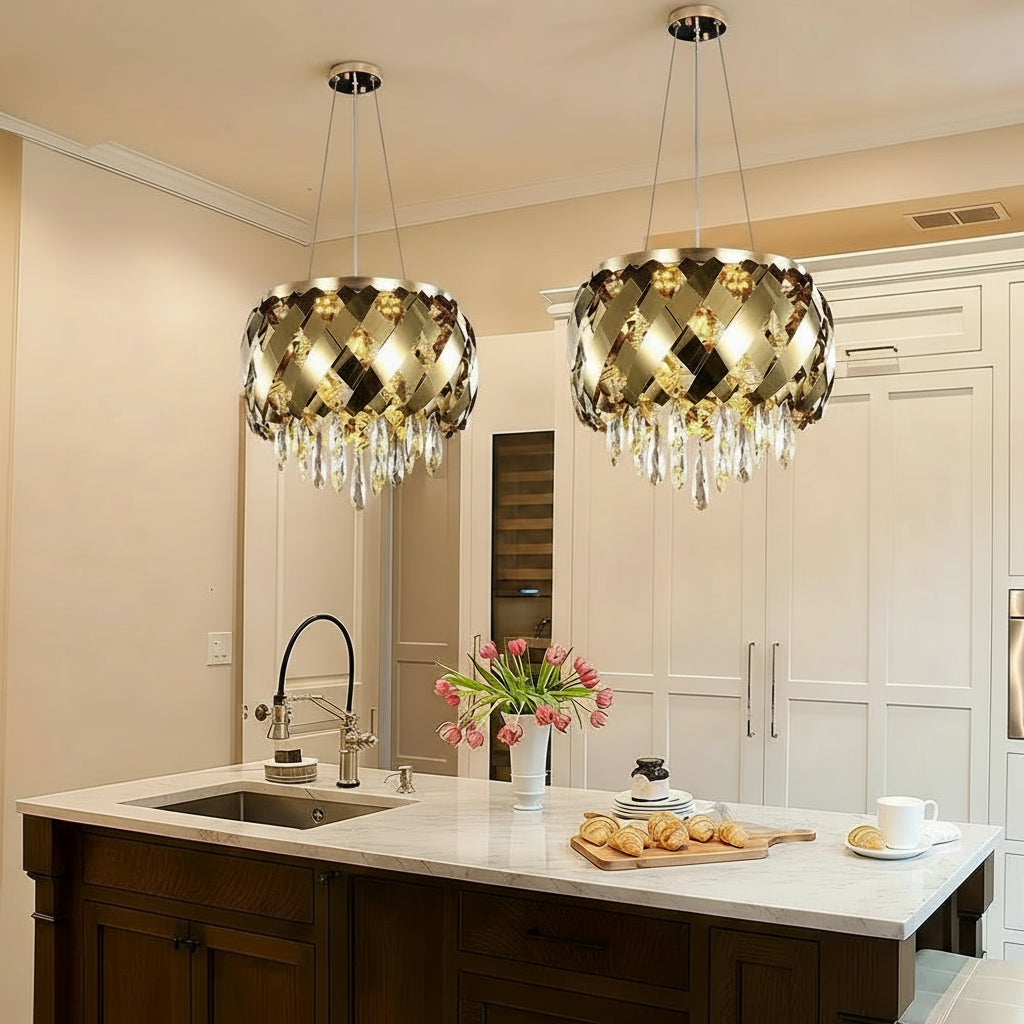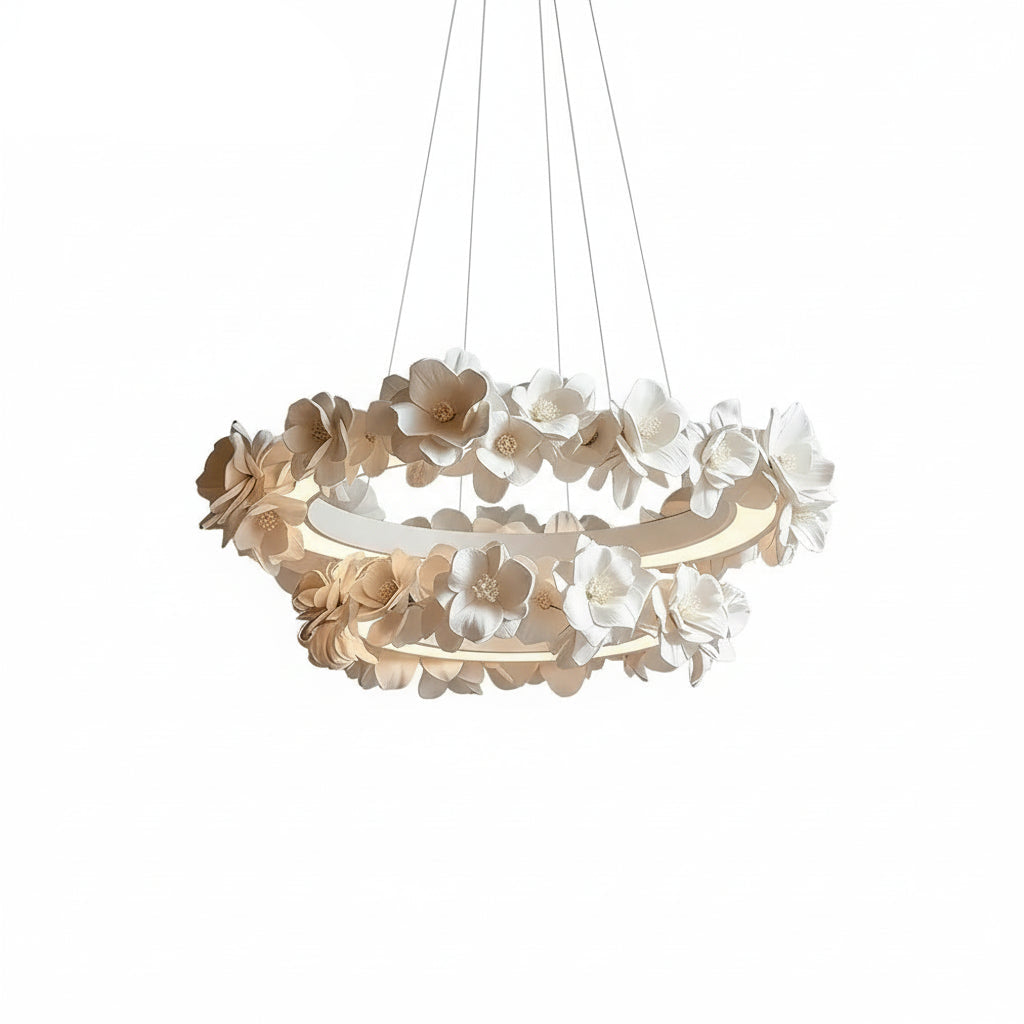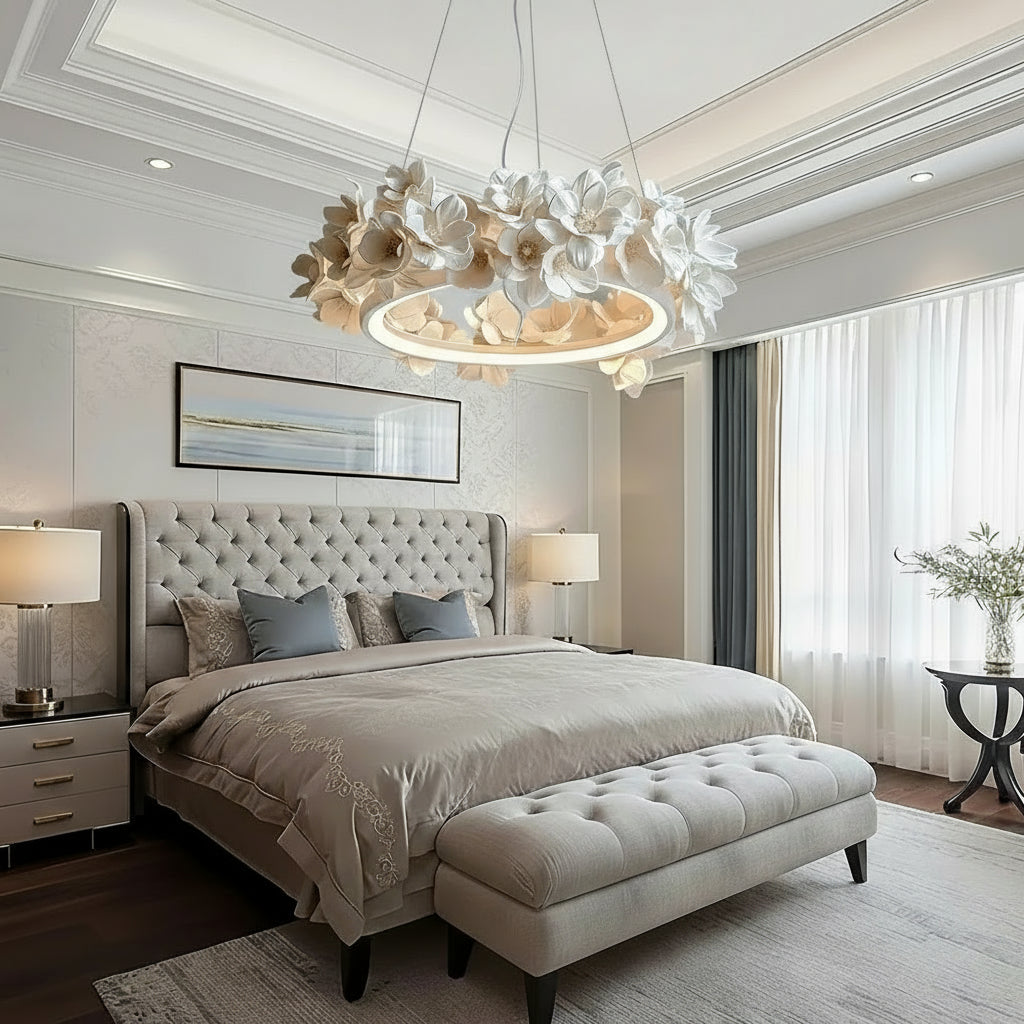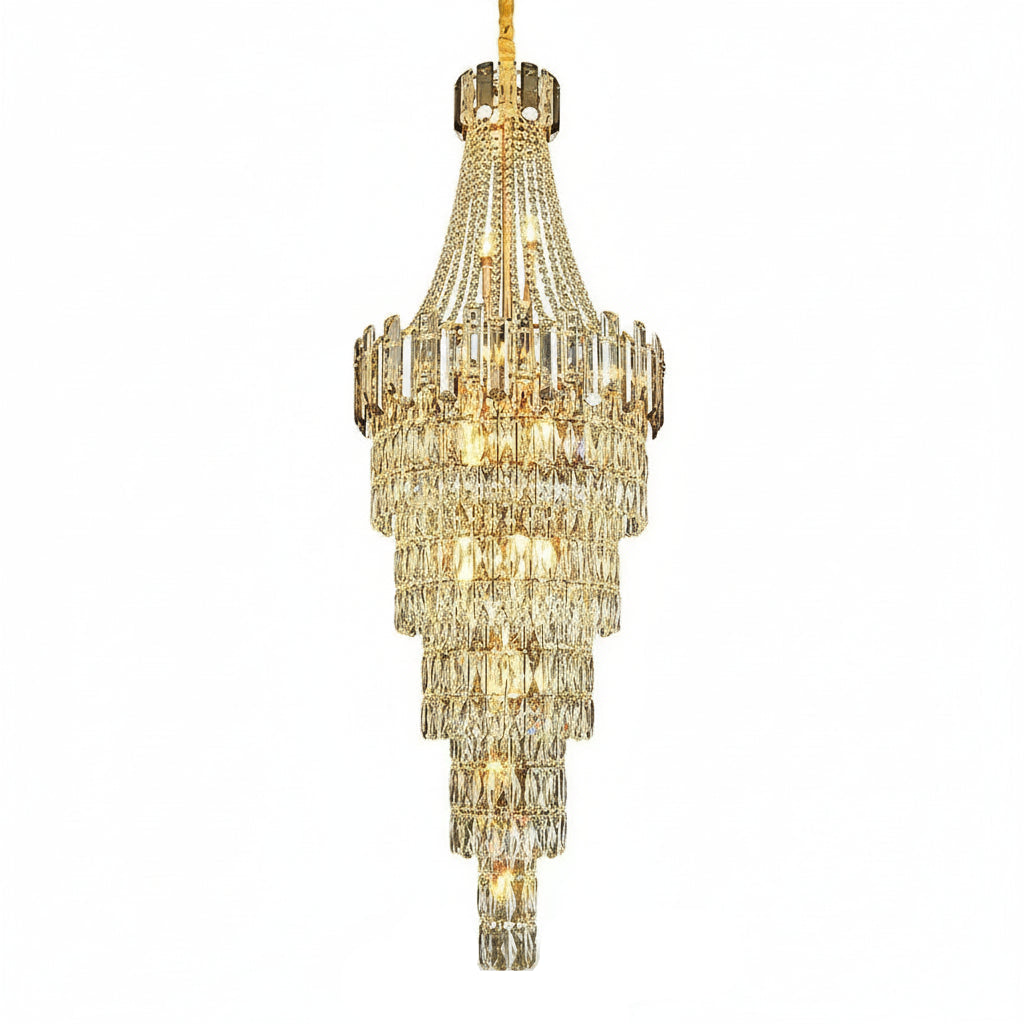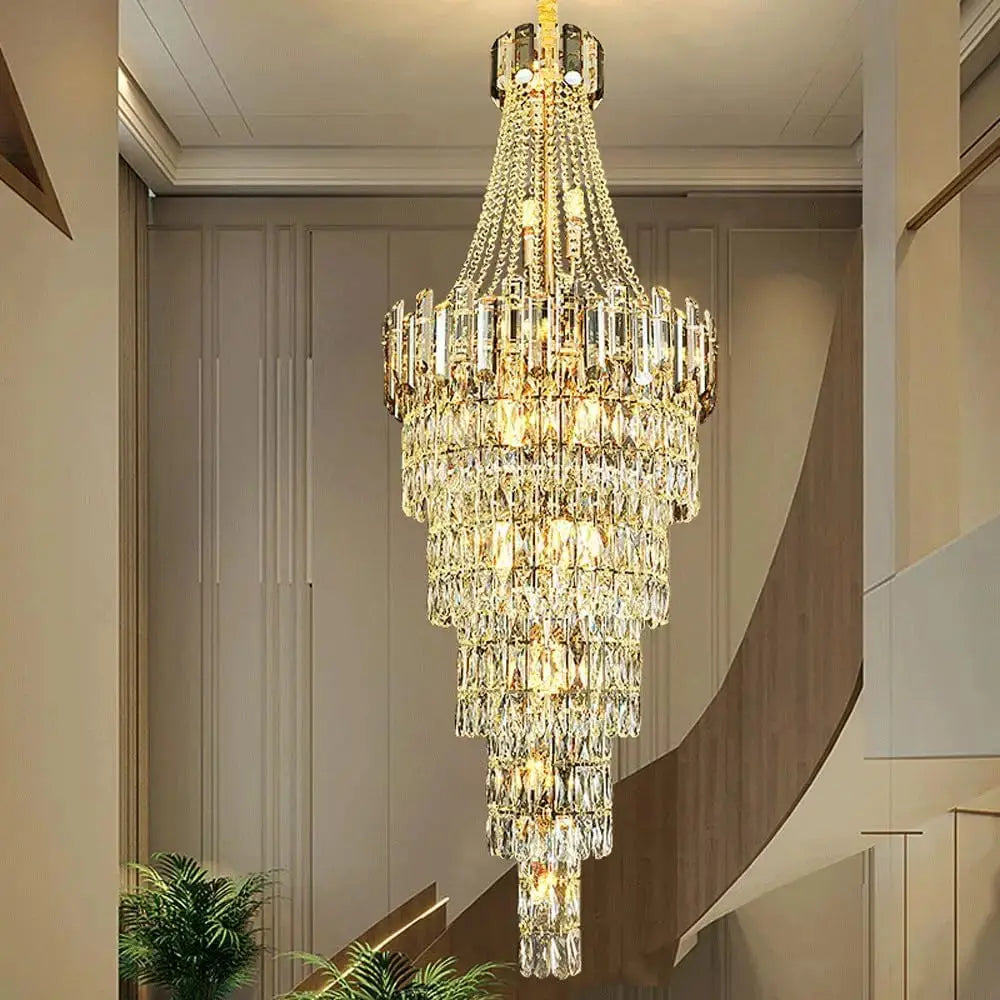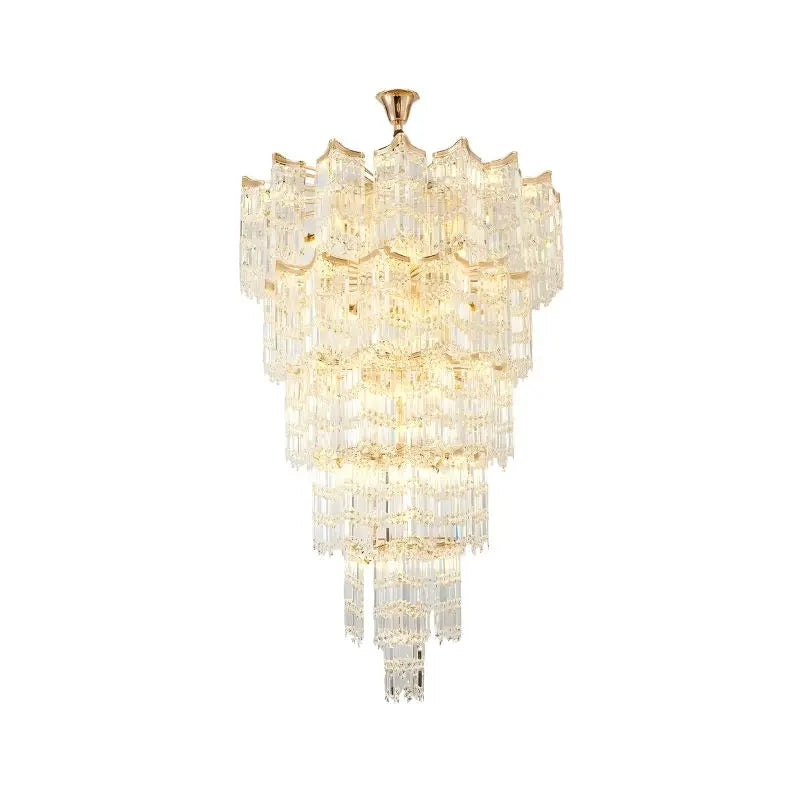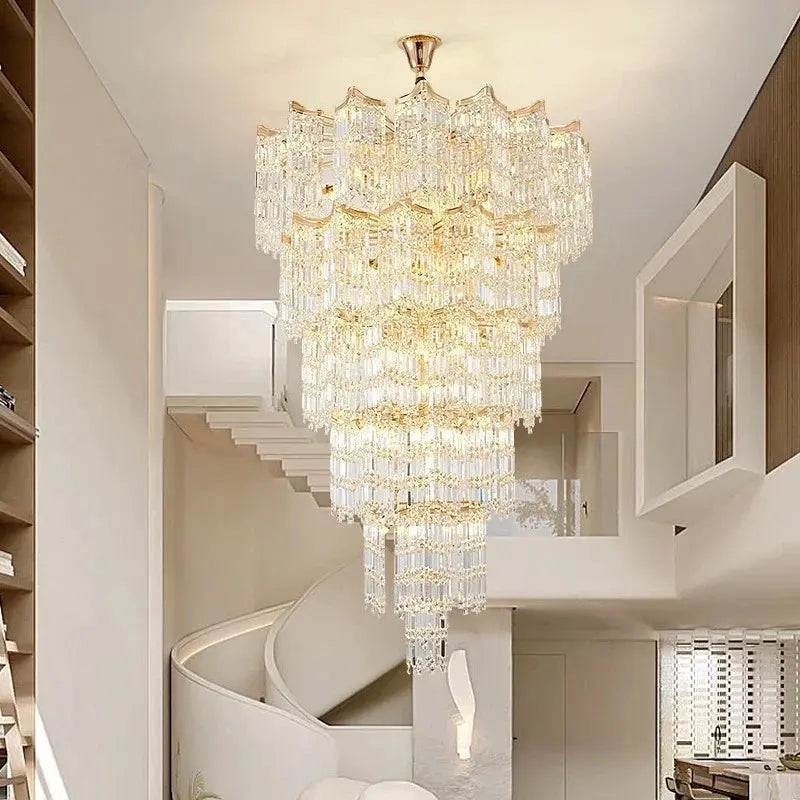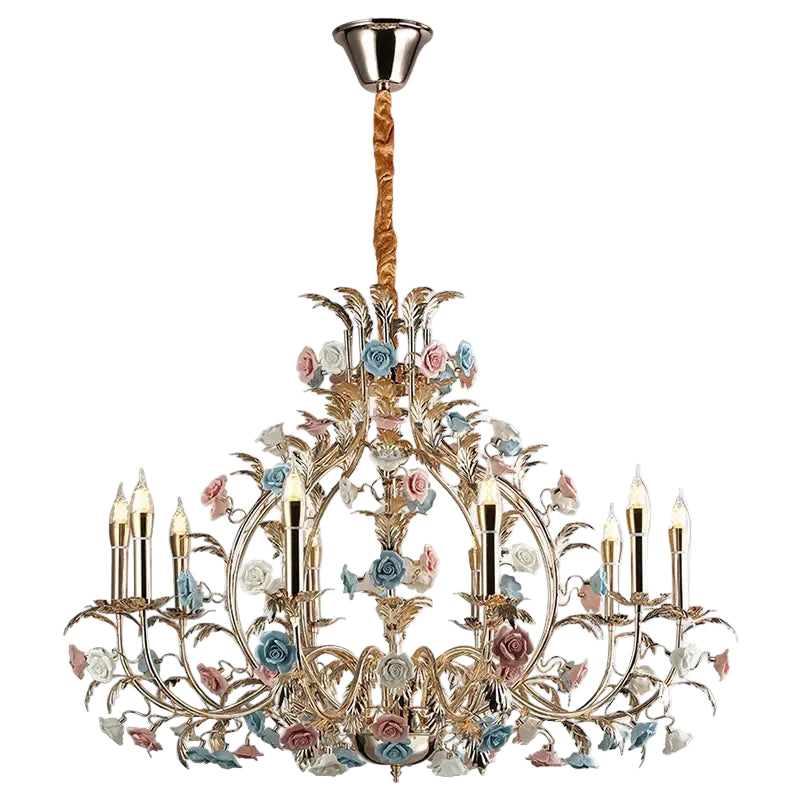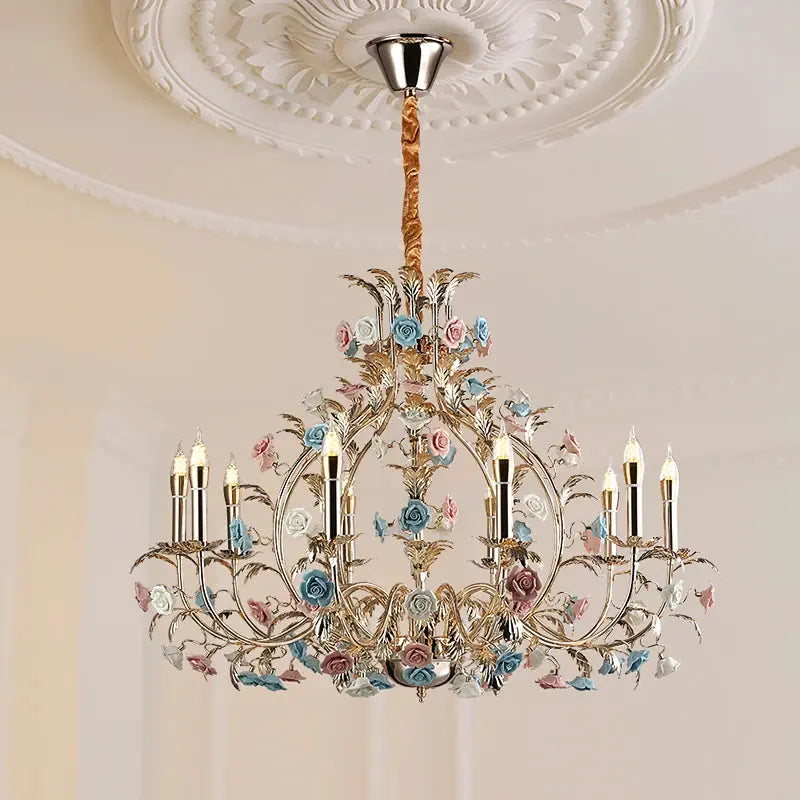Downlight recessed lighting has become a favorite choice for folks looking to give their homes a modern and tidy look. These lights fit right into the ceiling, so you don’t have bulky fixtures sticking out or taking up space. Whether you want bright lights for your kitchen or something softer for the living room, downlight recessed lighting gives you lots of options. Plus, with new features like LED and smart controls, it’s easier than ever to get the right mood and save on energy bills at the same time.
Key Takeaways
- Downlight recessed lighting sits flush with the ceiling, giving rooms a clean and uncluttered look.
- There are different trims and housings to match your needs, from kitchens to bathrooms and beyond.
- LED and smart features make these lights more energy efficient and flexible than ever before.
- Proper placement and spacing are important for even lighting and the best results in each room.
- Choosing the right type, style, and installation method ensures safety and long-lasting performance.
Understanding Downlight Recessed Lighting for Modern Homes
What Sets Downlight Recessed Lighting Apart
Downlight recessed lighting is different from other types of ceiling fixtures because it sits flush with the ceiling. This low-profile style means there’s nothing hanging down, so your room looks clean, open, and modern. It’s especially nice in homes where you want to keep things simple, or anywhere ceiling height is limited.
A few ways recessed downlights stand out:
- Provide even, smooth lighting without visible hardware
- Work in almost any room or ceiling type
- Can highlight artwork, create zones, or just give general light
If you’ve seen modern ball pendant lights in dining rooms and kitchens, you might have noticed how they complement the flush look of recessed lighting—both styles work great for that minimalist effect.
For folks tired of cluttered ceilings, recessed lighting is a go-to because it keeps your sightlines clear and makes the whole space feel bigger and brighter, without stealing the spotlight from your actual decor.
Main Components: Housings and Trims
Recessed downlights are made of two parts—housings and trims. The housing is the hidden base that sits inside the ceiling, with the wiring and mount. The trim is the style or finish you see; it directs and shapes the light.
Here’s a quick table showing the two key parts:
| Component | What It Does |
|---|---|
| Housing | Holds the fixture, manages wiring & safety |
| Trim | Decorative ring, shapes light and prevents glare |
Popular trim options:
- Baffles: reduce glare, make light soft for living spaces
- Reflectors: bounce light for more brightness
- Gimbal: adjust direction to spotlight or highlight things
Housings are often selected based on ceiling access and insulation—they’ll say “IC-rated” (for insulated ceilings) or “non-IC.”
Innovations in Recessed Lighting Technology
There’s been a lot of progress in downlight recessed lighting recently. Modern LEDs now offer much lower energy use and last for years. Dimmable options are easy to control and you can even buy smart versions that connect to your phone or voice assistant.
Some new features you might find include:
- Ultra-thin, canless fixtures that work in tight spots
- Adjustable white or colored lighting for mood
- Waterproof fixtures for showers and wet spaces
The trend is moving toward fixtures that are flexible and easy to update as your needs change. It’s much simpler now to swap out an old bulb or trim, tweak the color temperature, or dim the lights just right for movie night.
Whether you’re planning a complete remodel or just want to brighten up your living room, recessed lighting has a modern, practical answer for almost every situation.
Benefits of Downlight Recessed Lighting in Home Design
One of the first things you notice with downlight recessed lighting is just how clean it makes a space look. Fixtures sit flush with the ceiling, so there’s nothing dangling or cluttering up the area. Whether you’re remodeling a living room or updating a kitchen, recessed lights help rooms feel less busy and more pulled-together. No bulky fixtures to dust, less to bump into, and nothing to distract from your decor or the shape of the space.
- No hanging elements to obstruct the view
- Works well with both modern and traditional interiors
- Lets architectural details and colors stand out instead of the fixture itself
When you walk into a room with only recessed lights, it just feels open and calm, which is tough to achieve with most other lighting.
Maximizing Space and Ceiling Height
Recessed lighting makes even small rooms feel bigger. Because lights are built right into the ceiling, you get back a few precious inches—pretty helpful if you’ve ever lived with low ceilings or awkward corners. This kind of lighting comes in handy in spots like hallways, basements, or offices where every inch counts.
Here are some clear ways downlight designs help with space:
- Clears up ceiling space for fans or decorative moldings
- Opens up headroom, making low ceilings less noticeable
- Keeps pathways and doorways completely unobstructed
Energy Efficiency and Long-Term Value
Downlight recessed fixtures, especially when paired with modern bulbs like E14 Vintage LED retro bulbs, make a real difference in your utility bills. LEDs use much less electricity than older bulbs, and you’ll replace them far less often. Plus, less heat means less work for your air conditioner.
| Lighting Type | Average Lifespan (hours) | Energy Use (watts) | Mercury Free |
|---|---|---|---|
| Incandescent Bulbs | 1,000 | 60 – 100 | No |
| Compact Fluorescent | 8,000 | 13 – 23 | No |
| LED (modern type) | 15,000 – 25,000 | 6 – 15 | Yes |
- LEDs and other efficient choices can be dimmed easily, letting you set the exact mood and save even more electricity.
- Long-lasting bulbs mean fewer replacements, so you spend less time (and money) on upkeep.
- Mercury and lead-free options cut down on environmental impact without sacrificing nice, warm light.
It’s not just about saving money on bills—thoughtful lighting changes the way your home feels and can even add value over time.
Types and Styles of Downlight Recessed Lighting Fixtures
When it comes to picking recessed lighting, there are a surprising number of trims and styles. Each option has a huge impact on the atmosphere and function of your space. Whether you want diffuse, soothing light for a bedroom or very focused light for reading or highlighting artwork, the trim and style of fixture makes all the difference.
Baffle, Reflector, and Gimbal Trims Explained
- Baffle trims have ribbed interiors designed to cut down on glare and create a softer, more diffused light. Great for living rooms, bedrooms, and anywhere you want gentle illumination.
- Reflector trims use a smooth, shiny interior to throw as much light as possible. These are perfect if you need bright general lighting, like in kitchens or work areas.
- Gimbal trims (sometimes called eyeball trims) let you rotate and angle the beam of light. Really handy for spotlighting art, highlighting architectural details, or even for adjustable reading lights.
Specialized Trims for Bathrooms and Showers
Bathrooms aren't just another room; moisture, steam, and even water splashes are a real consideration. That's where wet-rated and specially sealed trims come in.
- Look for shower trims with water-resistant seals for wet zones.
- Bathroom trims are often designed with a frosted glass lens to cut down on glare above mirrors and sinks.
- Some models are rated for use inside showers, others just for damp locations. Always check the specs before you buy.
| Trim Type | Damp Rated | Wet Rated | Typical Use |
|---|---|---|---|
| Standard Baffle | Yes | No | Living rooms, bedrooms |
| Glass Shower | No | Yes | Above showers, tubs |
| Gimbal | Yes | Check | Art walls, accent lighting |
Choosing Between Fixed and Adjustable Fixtures
- Fixed fixtures point straight down. They’re dependable for overall room lighting, hallways, and entryways, where you just want even, consistent brightness.
- Adjustable fixtures (tilt or rotate) let you direct light exactly where you need it—a small tweak that’s perfect for changing displays, highlighting, or accenting certain features at different times.
- In open floor plans, mixing both types can give you flexibility and better results as your needs or furniture layouts change.
If you want lighting that quietly adapts to your lifestyle but doesn’t take over, experimenting with several trim types and adjustable options will help you get it just right.
Designing Effective Lighting Layouts with Downlight Recessed Lighting
Downlight recessed lighting isn’t just about picking fixtures and hoping for the best. If you want to get the most out of your lighting, you’ll want to consider layout just as much as the type of fixtures you use. Let’s break down the best ways to build a layout that’s both practical and stylish, no matter what room you’re working in.
Strategic Fixture Placement in Different Rooms
Different rooms call for different layouts, so think about what you use each space for before you start installing anything. For instance:
- In kitchens, place recessed lights about 18-24 inches out from cabinets or counters to avoid shadows while prepping or cooking.
- Living rooms often combine ambient and accent lighting, so court even spacing for general light and use extras to highlight art or architectural details.
- Hallways and entryways benefit from evenly spaced lights, keeping the whole area well-lit without any dark patches.
Every room deserves a lighting plan that fits how you use the space, not just how it looks in a catalog.
Layering and Zoning for Versatile Illumination
Don’t settle for a single "blanket" of light. Layering and zoning lets you adapt your lighting for mood, activity, or time of day:
- Start with general (ambient) lighting: spaced evenly for the base level of illumination.
- Add task lighting where you need focused light, like kitchen islands or reading nooks.
- Use accent lighting to call attention to specific features—maybe a painting, textured wall, or display shelf.
If you’re into wall-mounted options to mix up your layers, a varied selection of wall lights can add extra personality and function to your setup.
Calculating Spacing and Coverage
The trickiest part of downlight layouts is finding the right spacing, so you don’t end up with weird shadowy zones or harsh overlaps. Here’s a quick table for typical room heights and optimal downlight spacing:
| Ceiling Height | Approx. Distance Between Lights |
|---|---|
| 8 feet | 4 feet |
| 9 feet | 4.5 feet |
| 10 feet | 5 feet |
- Keep fixtures at least 18 inches away from walls to prevent harsh light scallops.
- For even distribution, lay out a grid, but tweak it if the room isn’t a perfect rectangle.
- Always balance the number of lights with the wattage/lumen output so you don’t over- or under-light the space.
Good lighting layouts take a little time upfront but pay off in spaces that feel comfortable and look intentional—nothing beats the feeling of a room where the light just fits what you do every day.
Smart and LED Solutions for Downlight Recessed Lighting

Bringing tech into the mix, today's downlight recessed lighting has gone well beyond basic on-off switches. Smart and LED options let you customize light, save money, and give your whole house a fresh feel with just a little effort. If you want lighting that fits your day-to-day life, the modern choices out there make it easy to get exactly what you want.
Upgrading to LED Recessed Fixtures
LED recessed lighting is taking over—and for good reason. LEDs use much less electricity and last far longer than old incandescent or halogen bulbs. You won't be climbing a ladder for bulb changes every few months. Some options, like integrated LED designs, combine the bulb and trim into one fixture. If you already have recessed lights, you can use retrofit kits that basically swap out the old bulbs for LED ones without a full redesign.
A quick look at how LEDs compare to older bulbs:
| Feature | LED | Halogen | Incandescent |
|---|---|---|---|
| Life Span | 25,000+ hours | 2,000 hours | 1,000 hours |
| Energy Used | Low | Medium | High |
| Heat Output | Very low | Moderate | High |
| Maintenance | Minimal | Moderate | High |
If you're considering style, many Modern Art LED pendant lights offer both a trim look and real savings on your power bill.
Smart Control and Dimming Features
Smart recessed lighting is getting more common, and it changes how you light your rooms. Instead of pulling out a switch, you can:
- Use your phone to turn lights on or off—anywhere in your home
- Set schedules: lights come on for security or turn off to help with energy bills
- Connect with smart home platforms, so everything syncs up
Dimmable smart LEDs are also popular. They let you set the right mood—bright for cleaning, soft for movie night, or even something in between. Be sure to check dimmer switch compatibility if you're upgrading; older switches may not work smoothly with LEDs.
Color Temperature and Tunable Lighting Options
Unlike old bulbs, today's smart and LED options let you pick your color temperature—warm like sunrise, crisp white for morning energy, or even cool tones for late work sessions. Many systems now offer tunable lighting, so you can change the tone from your phone or with simple voice commands.
- Warm white (2700K–3000K): Cozy and soft, good for living rooms and bedrooms
- Neutral white (3500K–4100K): Clean look for kitchens and offices
- Daylight (5000K–6500K): Brightest, great for tasks or waking up in the morning
With all these smart and LED advances, your lighting can finally keep pace with the rest of your home’s tech—without sacrificing style, comfort, or efficiency.
Applications of Downlight Recessed Lighting Throughout the Home
Downlight recessed lighting has practically changed how people light up their homes. These fixtures slide right into the ceiling so you get light where you want it—without bulky lamps or awkward shadows. In different rooms, recessed downlights do more than provide general brightness; they also help define tasks, moods, and even the whole vibe of your home. Let’s take a look at how these lights fit into various spaces.
Kitchens and Task-Oriented Spaces
Anyone who’s ever tried chopping vegetables under a poorly placed ceiling light knows how annoying bad lighting can be. In kitchens, downlight recessed lighting is the go-to for focused, even light that helps you see everything clearly:
- Over countertops and islands for safe food prep
- Above sinks for washing and cleaning
- Near the stove or cooking zone for clear visibility
- Under cabinets for extra illumination (often combined with other lighting)
Spacing and aiming can really make a big difference. Putting lights about 18-24 inches from the wall helps keep shadows off your workspace, so you won't struggle to see what you’re doing.
Living and Entertaining Areas
Living rooms, dining areas, and open spaces benefit a lot from the subtle touch of recessed lighting. These rooms often need flexible setups, whether it’s for movie nights, reading, or hanging out with friends. Here’s how downlights come in handy:
- Create a soft, even glow with widely spaced fixtures
- Use gimbal or adjustable trims to highlight art or textured walls (modern lighting fixtures also come in handy for this)
- Install dimmable LEDs to set the right mood for watching TV or a quiet evening
- Configure in zones—more light above seating, softer ambient lighting elsewhere
With recessed lights, you skip the dusting and dodging that comes with hanging fixtures. The room feels bigger, stays cleaner, and you still have the right lighting for every occasion.
Bathrooms and Wet Locations
Bathrooms demand lighting that won’t quit—even with all the steam and splashes. That’s where specialized trims for wet locations come in:
- Use wet-rated fixtures above showers and tubs
- Place downlights near mirrors for better morning routines
- Opt for baffle trims to soften glare while still keeping the area bright
Here’s a simple table showing fixture types and their best spots:
| Fixture Type | Ideal Location | Special Feature |
|---|---|---|
| Wet-rated downlight | Shower/Tub ceiling | Moisture and steam proof |
| Baffle trim | Over vanity/mirror | Reduces harsh shadows |
| Gimbal trim | Over shelves/cabinets | Adjustable direction |
You can mix and match these, as long as everything is up to code. Even small bathrooms feel bigger and more inviting when the lighting is set up right.
In short, downlight recessed lighting can be shaped to fit pretty much every room in the house. It helps you keep things neat, flexible, and genuinely welcoming, no matter the occasion or space.
Installation Considerations for Downlight Recessed Lighting

When you’re thinking about adding downlight recessed fixtures to your home, it’s less about style and more about practicality and safety. Getting the installation right means better lighting and fewer headaches down the line. Here’s what you need to know:
Choosing the Right Housing for Your Ceiling
- IC-rated housings are necessary if your ceiling has insulation, preventing fire risk.
- Non-IC housings are fine for ceilings without insulation, but never mix them up; it matters for both safety and efficiency.
- Airtight housings can help make your heating and cooling work better by stopping airflow leaks.
If you’re not sure what’s hiding inside your ceiling, don’t guess—take a peek or talk with someone who knows electrical work before cutting anything.
Retrofit vs. New Construction Installs
- New construction housings attach easily between open joists, so they’re the best choice when the ceiling is exposed (like during a remodel or build).
- Retrofit kits are made for existing ceilings—no need to tear everything apart, just a hole saw and some wiring.
- Integrated LED solutions, like the LED Spiral Hanging Light Fixture, can simplify upgrades and reduce future bulb swaps.
| Install Type | When to Use | Tools Needed | Pros |
|---|---|---|---|
| New construction | Open ceilings/remodels | Mounting brackets | Sturdy fit, big selection |
| Retrofit | Existing finished ceilings | Hole saw, connector | Minimal patching, less mess |
| Integrated LED | Both types possible | Minimal | Lower energy, less maintenance |
Safety Codes and Wet Location Ratings
- Always pick fixtures with proper UL (Underwriters Laboratories) or equivalent listing for the specific room.
- For showers or bathrooms, only use fixtures marked "wet location"—they’re sealed to handle steam and splashes.
- Outdoor or covered areas also need wet-rated options, so double check labels and ratings.
- Keep all wiring up to code, and don’t forget to check local rules—some towns are stricter than others.
• Turn off the power before starting any installation.
• Double check spacing for even coverage but avoid overcrowding—too many lights can make ceilings look cluttered.
• When in doubt, get help from a licensed electrician, especially with older homes or complicated circuits.
There’s nothing quite as frustrating as having to patch holes, fix wiring, or swap housings after the fact, so plan ahead and double check each step before drilling into your ceiling.
Conclusion
So, that’s the scoop on downlight recessed lighting. It’s honestly one of those upgrades that just makes sense if you want your home to look clean and feel bright without a bunch of bulky fixtures getting in the way. Whether you’re lighting up a kitchen, making your living room feel cozy, or just trying to see better in the hallway, recessed lights can handle it. There are so many options now—different trims, sizes, and even smart features—so you can really make it work for your space. Plus, with energy-efficient LEDs, you won’t have to worry about swapping bulbs all the time or running up your electric bill. If you’re thinking about changing up your lighting, recessed lights are a solid choice. They’re simple, modern, and just work in almost any room. Give them a try and see how much of a difference they make.
Frequently Asked Questions
What is downlight recessed lighting?
Downlight recessed lighting is a type of light fixture installed into the ceiling so that the light shines straight down. These lights sit flush with the ceiling, making them almost invisible and giving rooms a clean, modern look.
Where should I use recessed lighting in my home?
Recessed lights work well in many rooms, like kitchens, bathrooms, living rooms, and hallways. They are great for spaces where you want even lighting without bulky fixtures and are also good for highlighting artwork or special features.
What are the main parts of a recessed light?
A recessed light has two main parts: the housing and the trim. The housing is hidden inside the ceiling and holds the electrical parts. The trim is the visible ring that covers the hole and affects how the light looks and spreads.
Are LED recessed lights better than regular ones?
Yes, LED recessed lights use less energy, last much longer, and don’t get as hot as regular bulbs. They help save money on your power bill and usually need less maintenance over time.
Can I put recessed lights in a bathroom or shower?
Yes, but make sure to choose special trims and housings that are rated for wet or damp locations. These are designed to handle moisture safely and won’t rust or short out.
How do I know how far apart to space recessed lights?
A simple rule is to space the lights about half the height of your ceiling apart. For example, if your ceiling is 8 feet high, put the lights about 4 feet apart for even coverage.


